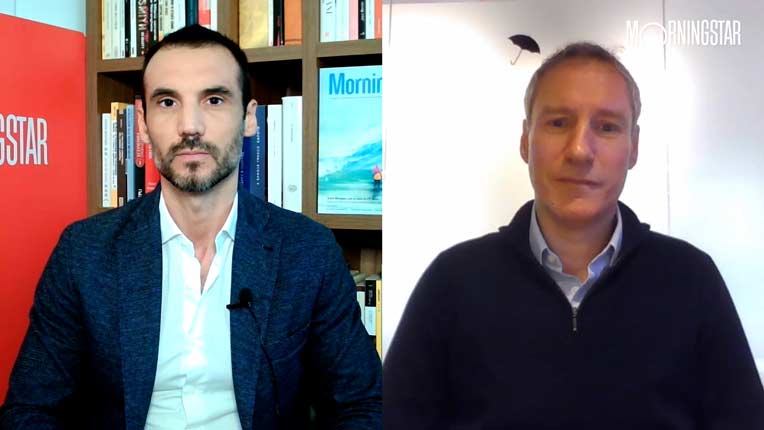
For many, a new recession looms, but its cause will be different this time, and the old financial remedies won’t do much difference.
In 2008, the crisis was financial, the response also financial. Central banks injected massive amounts of money in the system and lowered rates to historical lows for a historically long period; at the same time, governments increased debt dramatically to stimulate depressed economies. But these tools might not be able to tackle the type of trouble we’re starting to see.
Fears of a coming recession have been prompted by an inversion of the bond yield curve. In the U.S. as well as in Canada, long term bond yields in August have slipped under the level of shorter-term yields. “This unusual inversion of yield curves leads investors to believe that a recession will hit in 12 to 18 months,” notes a recent BMO Global Asset Management report. However, BMO doesn’t think that a recession will materialize because central banks will continue to lower rates and governments will call on budgetary stimulus.
An industrial recession
But it's not clear those cures fit the present problems, which are economic and commercial, not financial. Those usual tools “have less room to maneuver,” observes Pedro Antunes, Chief Economist at the Conference Board of Canada.
“We are in an industrial recession. Manufacturing is in a recession worldwide.” says Drummond Brodeur, global strategist at CI Funds. “I think we will have a global recession in 2020, he adds; we won’t be able to avoid a cyclical slowdown in global growth.”
Manufacturing might be a relatively small part of advanced economies. It still carries a lot of economic weight. In the U.S., even though consumers constitute 70% of the economy, “they don’t dictate recessions; company capital expenditure does”, asserts Jean-Pierre Couture, chief economist and portfolio manager at Hexavest.
The China-U.S. trade tensions are the bug now draining the economy. “These tensions are impacting the business climate, notes Couture. Companies don’t have any visibility on their inputs and their markets, so they postpone investments.” At some point, that lack of investment will translate into less jobs and spill into the consumer space, reducing purchases.
December - when the second round of trade tariff hikes kick in - could be a tipping point when the trade wars start impacting consumers, thinks Brodeur. “Just in time for the Christmas wish list,” he says. Until now, tariffs decreed by the Trump administration affected only a small area of goods to which consumer spending is not that sensitive, and which the U.S. can source elsewhere. But in December, the 15% tariffs will hit consumer goods which China alone supplies, like cell phones and a slew of electronic products. “Thanks to inventories, companies can delay the impact, he says. But the effect of tariffs will build over time and continue to snowball if the U.S. and China don’t de-escalate.”
Because “de-escalation” is the response to the present threat of recession. Will it happen? Hard to tell “because politics carries more weight that economics or finance,” says Couture. And the big risk, notes Antunes, “is whether tariff increases will impact consumers.”
Out of ammunition
For the past decades, most slowdowns were caused by monetary policy – and “repaired” by monetary policy, recalls Brodeur. “But what the market is missing is that this slowdown has nothing to do with the Federal Reserve, he adds. In fact, central banks are out of ammunition, but they can’t admit that. The problems we face can’t be solved by central banks, but by trade, and it has to be solved by trade policy.”
To counter the ongoing industrial recession, the repair tools we’ve become accustomed to won’t work. “Central banks trying to drive better investments with lower rates are not very successful, says Antunes. In Canada, even if we have low rates, investment is still not strong.” Economists call the attempt by central banks to stimulate investment with monetary policy “pushing on a string”.
Two other repair tools of the financial crisis – fiscal policy and deficit spending – now have limited scope. With total debt representing 39% of GDP, Canada’s government has room to maneuver, thinks Pedro Antunes, “but there is very little room at the provincial level, except maybe in Quebec”. In the U.S., there’s very little wiggle room, with its federal debt of US$ 22.5 trillion, representing 109% of a US$20.5 trillion GDP.
There is a glimmer of hope with the coming American elections, thinks Couture. To win votes, Donald Trump could lower frictions with China. But that will only be a temporary reprieve, believes Brodeur, because China and the U.S. are locked in a fight for hegemony and “the ultimate aim of the U.S. is to derail China. Tactics may change, but the tensions won’t go away. The ability to de-escalate will depend on Trump’s reading of his election chances, but in view of a recession that is not good. It will probably lead to more erratic policy. It creates this endemic uncertainty, so investment is frozen.”
A black cloud
There’s something dark lurking in the background: the “zombie” world of corporate debt, about which Morningstar has written recently. According to an OECD report “global outstanding debt in the form of corporate bonds issued by non-financial companies reached almost US$13 trillion at the end of 2018. This is twice the amount in real terms that was outstanding in 2008.”
Not only is this debt overhang at a historical high, its quality is at historical lows: 54% of bonds are of BBB grade, the level just above junk. Writes the OECD report: “In the case of a downturn, highly leveraged companies would face difficulties in servicing their debt, which in turn, through lower investment and higher default rates may amplify the effects of a downturn.”
This threat comes with only a slight advantage: central banks are well aware of it, points out Couture, and “they will do whatever it takes to keep it from exploding by holding rates below zero, even on the whole length of the yield curve if necessary.”
True, but this debt overhang remains a wrench that could fall into any recession repair work – especially if tariffs crank up inflation - and pressure central banks to increase interest rates.








.jpg)











